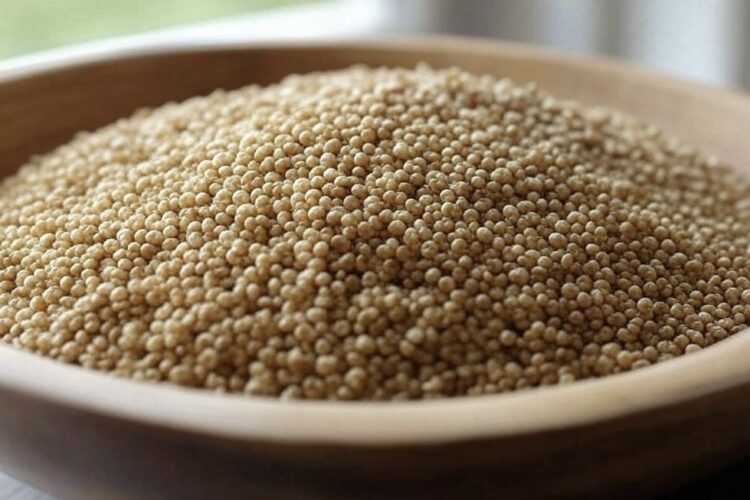In the ever-evolving world of health and nutrition, few foods have garnered as much attention as quinoa. Often hailed as a superfood, this humble pseudocereal has transcended its ancient roots to become a modern dietary staple for those seeking a healthy diet. But what sets quinoa apart from other whole grains? The answer lies in its designation as a complete protein, a rare feat for a plant-based source. Packed with essential amino acids, vitamins, minerals, and fiber, quinoa offers a nutrient density that makes it a standout in the realm of sustainable food. Let’s dive into the science, history, and practical applications of Chenopodium quinoa, exploring why it’s celebrated as a vegan protein source and a powerhouse of health benefits.
The Origins of Quinoa: An Andean Grain with Global Impact
Quinoa, scientifically known as Chenopodium quinoa, traces its origins to the Andean highlands of South America, where it has been cultivated for over 5,000 years. Indigenous peoples of Peru, Bolivia, and Ecuador revered this quinoa seed as a sacred crop, dubbing it the “mother grain.” Unlike true cereals like wheat or rice, quinoa is a pseudocereal, meaning it’s not a grass but mimics the nutritional profile of grains. This distinction contributes to its gluten-free nature, making it a go-to for those with celiac disease or gluten sensitivities.
Today, quinoa’s reputation as a sustainable food has fueled its global rise. It thrives in harsh climates, requiring minimal water and tolerating high altitudes, which aligns with growing demands for environmentally friendly agriculture. But its real claim to fame lies in its nutritional prowess, particularly its status as a complete protein.
What Makes Quinoa a Complete Protein?
Proteins are the building blocks of life, and essential amino acids—the nine amino acids our bodies cannot synthesize—must come from our diet. Most plant-based proteins, like beans or rice, lack one or more of these, requiring careful food pairing to meet nutritional needs. Quinoa breaks this mold. It contains all nine essential amino acids, including lysine and methionine, which are often scarce in vegetarian diets. This makes quinoa a vegan protein source par excellence, offering a protein bioavailability comparable to animal-based proteins like eggs or milk.
A single cup of cooked quinoa (185 grams) provides approximately 8 grams of protein, alongside 5 grams of fiber and just 222 calories. This balance of macronutrients contributes to satiation, helping regulate appetite and support weight management. For athletes, vegans, or anyone prioritizing a healthy diet, quinoa’s amino acid profile is a game-changer.
A Nutrient-Dense Powerhouse: Vitamins, Minerals, and More
Beyond protein, quinoa’s nutrient density is a key reason it’s labeled a superfood. It’s rich in vitamins like folate, essential for DNA synthesis and particularly vital during pregnancy. It also delivers magnesium, a mineral critical for muscle function and energy production, and phosphorus, which supports bone health. Other standout minerals include iron, zinc, and potassium, all of which bolster immunity, oxygen transport, and cardiovascular health.
Quinoa’s antioxidant properties further elevate its status. Compounds like quercetin and kaempferol, found in higher concentrations than in many fruits, combat oxidative stress and inflammation, offering anti-inflammatory benefits. Its prebiotic fiber feeds beneficial gut bacteria, promoting digestive health and potentially reducing the risk of chronic diseases. With a low glycemic index, quinoa also supports stable blood sugar levels, making it a smart choice for diabetics or those managing insulin sensitivity.
Addressing the Saponin Factor
One quirk of quinoa is its natural coating of saponins, bitter compounds that protect the plant from pests. While this contributes to its resilience, it can impart an unpleasant taste if not rinsed properly before cooking. Most commercial quinoa is pre-rinsed, but a quick soak or rinse under running water removes any residual saponins, ensuring a clean, nutty flavor. This minor step unlocks quinoa’s versatility, from fluffy side dishes to hearty quinoa flour baked goods.
Culinary Versatility: From Seeds to Flour
Quinoa’s adaptability in the kitchen is unmatched. The quinoa seeds cook in just 15-20 minutes, yielding a fluffy texture with a subtle crunch. They can be seasoned for savory dishes, mixed into salads, or sweetened for breakfast bowls. Quinoa flour, ground from the seeds, opens up a world of gluten-free baking—think pancakes, muffins, or even pizza crusts. Its mild flavor pairs well with both sweet and savory ingredients, making it a staple in diverse cuisines.
For those exploring plant-based cooking, quinoa’s ability to absorb flavors while delivering health benefits is a boon. It’s a natural thickener in soups, a base for veggie patties, or a substitute for rice in stir-fries. The possibilities are endless, cementing its role as a dietary staple.
Health Benefits Backed by Science
The health benefits of quinoa are well-documented. Its fiber content—higher than that of brown rice or oats—supports heart health by lowering cholesterol and improving digestion. Studies suggest that its antioxidant properties may reduce inflammation markers, potentially mitigating risks of conditions like arthritis or cardiovascular disease. The low glycemic index aids in blood sugar control, while magnesium and potassium contribute to healthy blood pressure.
For vegetarians and vegans, quinoa’s essential amino acids fill a critical gap, ensuring adequate protein intake without reliance on animal products. Its folate and iron content combat anemia, a common concern in plant-based diets. Even its prebiotic fiber ties into emerging research on the gut-brain axis, hinting at benefits for mental well-being.
Sustainability and Ethical Appeal
Quinoa’s rise isn’t just about nutrition—it’s also a poster child for sustainable food. It grows in arid conditions where other crops fail, requiring less water than rice or wheat. However, its global popularity has sparked debate about its impact on Andean farmers. Increased demand has driven prices up, sometimes pricing locals out of their traditional staple. Ethical sourcing—supporting fair trade initiatives—ensures that quinoa remains a win-win for both consumers and producers.
Practical Tips for Incorporating Quinoa
Ready to make quinoa a cornerstone of your healthy diet? Start simple: swap it for rice in your next meal or toss it into a salad with veggies and a light dressing. For breakfast, cook it with almond milk, cinnamon, and fruit for a nutrient-packed porridge. Baking with quinoa flour requires some experimentation—combine it with other flours for structure—but the payoff is worth it for gluten-free treats.
Store uncooked quinoa in an airtight container in a cool, dry place; it lasts for months. Cooked quinoa keeps in the fridge for up to five days, making it ideal for meal prep. Rinse it well to ditch the saponins, and you’re set to enjoy its full potential.
Quinoa vs. Other Grains: How It Stacks Up
Compared to other whole grains, quinoa shines. Brown rice offers fiber but lacks the complete protein punch. Oats match quinoa’s fiber but fall short on lysine. Bulgur wheat has protein but isn’t gluten-free. Quinoa’s unique blend of amino acids, vitamins, and minerals, paired with its versatility, gives it an edge as a superfood.
The Verdict: Why Quinoa Deserves Its Crown
Quinoa isn’t just a trend—it’s a nutritional marvel. As a complete protein, it bridges the gap for plant-based eaters while delivering health benefits that rival any whole grain. Its nutrient density, from magnesium to antioxidants, supports everything from muscle recovery to gut health. Add its sustainable credentials and culinary flexibility, and it’s clear why quinoa has earned its title as a complete food.
Whether you’re a vegan seeking protein bioavailability, a health nut chasing anti-inflammatory perks, or a home cook craving variety, quinoa delivers. This Andean grain has transcended its origins to become a global icon, proving that good things come in small, mighty packages. So, grab some quinoa seeds, rinse away the saponins, and let this superfood transform your plate—and your health.






